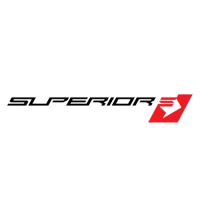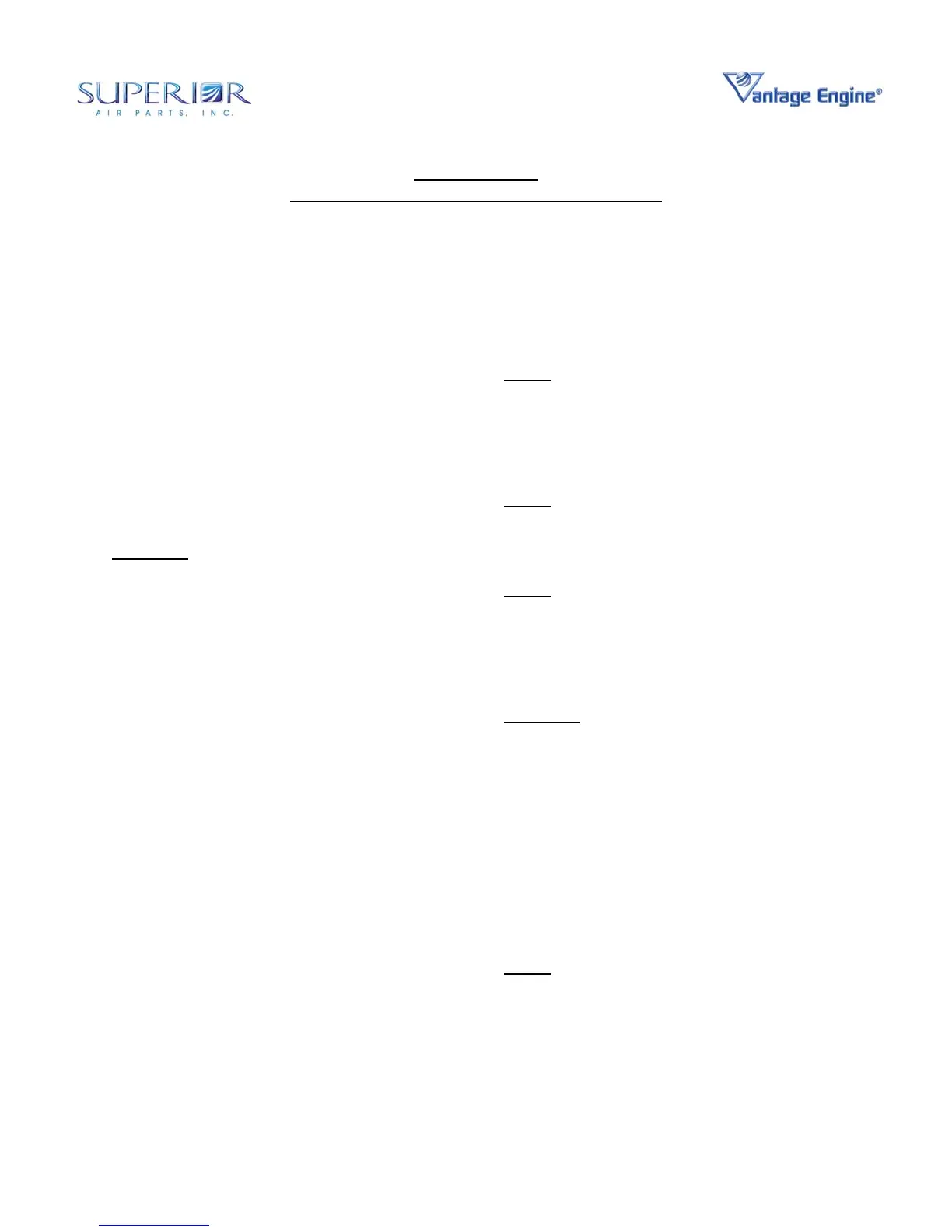Overhaul Manual
O-360 and IO-360 Series Engines
19
© March 2005 Superior Air Parts Inc.
72-00-13
Repair Procedures
REPAIR NO. 8
VALVE, VALVE SEAT, AND VALVE GUIDE
General
Valves and valve guides must be replaced at
overhaul. The surfaces of the valves and their
seats can normally be resurfaced and
reconditioned as a repair.
Valves must be removed from the cylinder and
cleaned of all sludge and carbon build-up prior
to repairs. Refer to the Cleaning section of this
manual. Refer to the Inspection and Check
section of this manual for appropriate inspection
procedures and limits on damage and wear.
Valve seat grinding
(1) The ID of the valve guide is used as a
pilot for all valve seat reconditioning
operations.
WARNING
: USE THE CORRECT PERSONAL
PROTECTION. POLISHING AND GRINDING
WILL CAUSE LOOSE PARTICLES THAT CAN
GET IN YOUR EYES.
(2) Grind valve seats with suitable grinding
equipment to a 30° angle on intake
valve seats and a 45° angle on exhaust
valve seats. Grind valve seats to 16 RA
max. (ref) concentric to guide bore
within 0.002 in.
(a) On intake valve seats, use a 15°
grinding wheel to grind the top
surfaces of the valve seat to
produce the outer face diameter.
Bring the face of the intake valve
seats to the specified width
(Dimension “B”) by narrowing the
throat with a 75° wheel. Refer to
Figure 72-00-13.5.
(b) On exhaust valve seats, use a 15°
grinding wheel to grind the top
surface of the valve seats to
produce the outer face diameter.
The width of the exhaust valve seats
should conform to dimension “D”.
Refer to Figure 72-00-13.5.
(c) If the seat wear has progressed to
the extent that the entire face of the
15° narrowing wheel must be
brought into contact with the seat in
order to achieve the specified
diameter, the seat must be
replaced.
Valve seat replacement
(3) Valve seats that are damaged, worn, or
loose must be replaced. Use the
following procedure or an equivalent.
NOTE:
The valve guide must be replaced at
the same time as a valve seat is
replaced. This ensures concentric
grinding of the valve seat. See
discussions later in this Repair for
guide replacement procedures.
NOTE:
For the purpose of removing valve
seats, a tool may be fabricated from
threaded bar stock, hardware and
sponge material.
NOTE: The valve seats are an interference fit
installation. The cylinder must be
heated and the valve seat cooled. The
resulting difference in size will allow
the seat to be removed from the
cylinder head.
WARNING
: USE THE CORRECT PERSONAL
PROTECTION. HEATED PARTS WILL
CAUSE BURNS.
(4) Heat the cylinder to 575°F and secure to
a fixture.
(5) Soak the removal tool sponge in cold
(refrigerated) water. Insert the tool
through the valve seat. The seat should
shrink slightly and stick to the sponge.
Pull the tool back out with the seat. Use
care to not tilt the seat during this
process.
NOTE:
This procedure must be performed as
quickly as possible.
(6) Measure the ID of the valve seat recess
to determine which oversize seat must
be installed. Refer to Tables 72-00-13.7
and 72-00-13.8.

